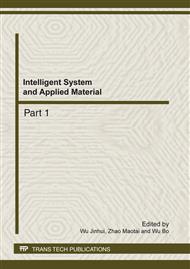p.256
p.262
p.267
p.272
p.277
p.282
p.287
p.293
p.298
Event-Based Modeling of Essential Medicines Selection with Numerical Material
Abstract:
The purpose of this study is to explore new methods on essential medicines selection when experimental materials disable. This paper deals with a novel system design and optimization by the tools of computer programming for the first time, successfully solving a serial problems of medicines selection in facing 18 cases after 20 runs of simulation for each case. The significant outcome of computer printout provides a sound basis for optimally choosing essential medicines in the promising reality of social medicine revolution. This original research has led to the discovery of a fast and costless selection principle for not only medicines selection.
Info:
Periodical:
Pages:
277-281
Citation:
Online since:
February 2012
Authors:
Price:
Сopyright:
© 2012 Trans Tech Publications Ltd. All Rights Reserved
Share:
Citation:


